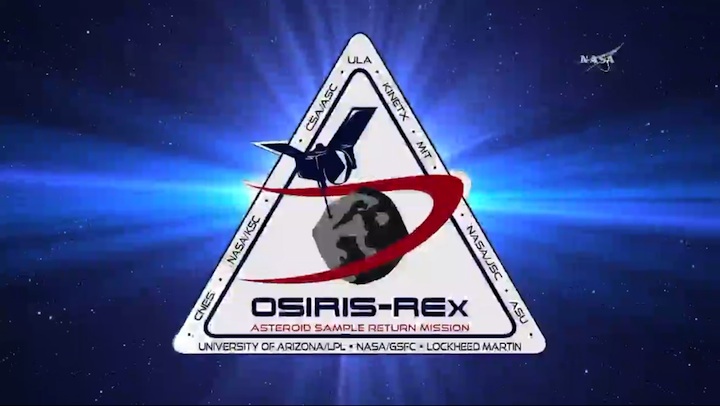.


15.02.2017
A NASA spacecraft begins its search Thursday for an enigmatic class of near-Earth objects known as Earth-Trojan asteroids. OSIRIS-REx, currently on a two-year outbound journey to the asteroid Bennu, will spend almost two weeks searching for evidence of these small bodies.
Trojan asteroids are trapped in stable gravity wells, called Lagrange points, which precede or follow a planet. OSIRIS-REx is currently traveling through Earth's fourth Lagrange point, which is located 60 degrees ahead in Earth's orbit around the sun, about 90 million miles (150 million kilometers) from our planet. The mission team will use this opportunity to take multiple images of the area with the spacecraft’s MapCam camera in the hope of identifying Earth-Trojan asteroids in the region.
Although scientists have discovered thousands of Trojan asteroids accompanying other planets, only one Earth-Trojan has been identified to date, asteroid 2010 TK7. Scientists predict that there should be more Trojans sharing Earth’s orbit, but they are difficult to detect from Earth as they appear near the sun on the Earth’s horizon.
“Because the Earth’s fourth Lagrange point is relatively stable, it is possible that remnants of the material that built Earth are trapped within it,” said Dante Lauretta. “So this search gives us a unique opportunity to explore the primordial building blocks of Earth.”
The search commences today and continues through Feb. 20. On each observation day, the spacecraft’s MapCam camera will take 135 survey images that will be processed and examined by the mission’s imaging scientists at the University of Arizona, Tucson. The study plan also includes opportunities for MapCam to image Jupiter, several galaxies, and the main belt asteroids 55 Pandora, 47 Aglaja and 12 Victoria.
Whether or not the team discovers any new asteroids, the search is a beneficial exercise. The operations involved in searching for Earth-Trojan asteroids closely resemble those required to search for natural satellites and other potential hazards around Bennu when the spacecraft approaches its target in 2018. Being able to practice these mission-critical operations in advance will help the OSIRIS-REx team reduce mission risk once the spacecraft arrives at Bennu.
NASA's Goddard Space Flight Center provides overall mission management, systems engineering and the safety and mission assurance for OSIRIS-REx. Dante Lauretta of the University of Arizona, Tucson, is the principal investigator, and the University of Arizona also leads the science team and the mission's observation planning and processing. Lockheed Martin Space Systems in Denver built the spacecraft and is providing flight operations. Goddard and KinetX Aerospace are responsible for navigating the OSIRIS-REx spacecraft. OSIRIS-REx is the third mission in NASA's New Frontiers Program. NASA's Marshall Space Flight Center in Huntsville, Alabama, manages the agency's New Frontiers Program for its Science Mission Directorate in Washington.
---
This magnified, cropped image showing Jupiter and three of its moons was taken by NASA’s OSIRIS-REx spacecraft’s MapCam instrument during optical navigation testing for the mission’s Earth-Trojan Asteroid Search. The image shows Jupiter in the center, the moon Callisto to the left and the moons Io and Europa to the right. Ganymede, Jupiter’s fourth Galilean moon, is also present in the image, but is not visible as it is crossing in front of the planet.
The image was taken at 3:38 a.m. EST on Feb. 9, 2017, when the spacecraft was 75 million miles (120 million kilometers) from Earth and 419 million miles (675 million kilometers) from Jupiter. With an exposure time of two seconds, the image renders Jupiter overexposed, but allows for enhanced detection of stars in the background.
NASA’s Goddard Space Flight Center provides overall mission management, systems engineering and the safety and mission assurance for OSIRIS-REx. Dante Lauretta of the University of Arizona, Tucson, is the principal investigator, and the University of Arizona also leads the science team and the mission’s observation planning and processing. Lockheed Martin Space Systems in Denver built the spacecraft and is providing flight operations. Goddard and KinetX Aerospace are responsible for navigating the OSIRIS-REx spacecraft. OSIRIS-REx is the third mission in NASA’s New Frontiers Program. NASA’s Marshall Space Flight Center in Huntsville, Alabama, manages the agency’s New Frontiers Program for its Science Mission Directorate in Washington
Quelle: NASA

